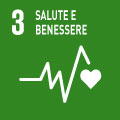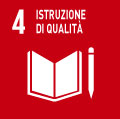- Docente: Paola Maria Carmela Italia
- Crediti formativi: 6
- SSD: L-FIL-LET/13
- Lingua di insegnamento: Inglese
- Modalità didattica: Lezioni in presenza (totalmente o parzialmente)
- Campus: Bologna
- Corso: Laurea Magistrale in Digital humanities and digital knowledge (cod. 6736)
-
dal 10/11/2025 al 18/12/2025
Conoscenze e abilità da conseguire
The course aims to provide students with an overview of the main concepts and ideas of textual criticism applied to literary texts, focusing on their linguistic status, their transmission, and their manuscript and print tradition,in relationship with Digital Textuality. The particular pitch of the module, aimed to beginners, will inspire students with basic or limited knowledge of literary history, linguistics and textual criticism to engage with a new and innovative approach to literary texts. Through the analysis of different Digital Scholarly Editions (DSE), by the end of the course the students will be able to recognize the critical paradigm in a DSE and to compare the different theoretical and methodological frameworks for its realization, according to national and international standards, in order to project their own SDE.
Contenuti
1. WHAT IS A TEXT?
2. Manuscripts, Document, Witnesses - Video resources: how to make a manuscripe and a book
3. Inside: Manuscripts, document, books – Visit to BUB;
4. WHAT IS AN ERROR? Copy, Error, Tradition
5. WHAT IS AN EDITION? Single source edition: Diplomatic/Critic;
6. WHAT IS AN EDITION? More than one source edition: Lachmann vs Bédier
7. WHAT IS APPARATUS? Positive/Negative
8. DIGITAL TEXTUALITY ANALOGIC VS DIGITAL EDITIONS
9. SEDT Guest Lecture ELENA SPADINI: Technologies of text.
10. LEGGO MANZONI PROJECT Analogic vs Digital Editions
11. Inside: the work flow from analogic to digital – Visit to ADLAB
12. Digital Scholarly Editions: Theory
13. Digital Scholarly Editions: Catalogue & Models
14. Digital Scholarly Editions: Evaluation - RIDE
15. Digital Scholarly Editions. Introduction to Xml/TEI Markup.
Testi/Bibliografia
SYLLABUS
Attending students:
1. Digital Scholarly Editing. Theories and practices, Matthew James Driscoll and Elena Pierazzo (eds.), OpenBookPublisher, 2016 [https://www.openbookpublishers.com/reader/483#page/1/mode/2up] (ONLY Theories, pp. 1-137)
2. A Vademecum to Scholarly Editions (selected concepts from PLS [https://www.sglp.uzh.ch/static/MLS/stemmatology/index.html]
3. Work and Document, ed. by Bárbara Bordalejo, “Ecdotica”, n. 10 (2013), pp. 7-76 [https://site.unibo.it/ecdotica/it/numeri-della-rivista/ecdotica-10-2013]
4. Roberto Rosselli Del Turco, The Battle We Forgot to Fight: Should We Make a Case for Digital Editions?, in Digital Scholarly Editing. Theories and practices, Matthew James Driscoll and Elena Pierazzo (eds.), OpenBookPublisher, 2016, pp. 219-229 [https://www.openbookpublishers.com/reader/483#page/1/mode/2up].
For non-attending students, the Syllabus also includes the study of the second part of Pierazzo-Driscoll's volume, pp. 137-237 and P. Italia-G. Raboni, What is authorial philology, Open Book Publisher, Cambridge, 2021 [https://www.openbookpublishers.com/books/10.11647/obp.0224]
Metodi didattici
TEACHING METHODS
Face-to-face classes and laboratory/workshop sessions of 15 lessons (30 hours). During the first lesson students will be given a Welcome Text, to text the class level. We will use EOL, Mentimeter Exercises, Php and audio materials available on VIRTUALE and video lessons taken from the ERC DIXIT Project [https://teach.dariah.eu].
Modalità di verifica e valutazione dell'apprendimento
The exam is made up of two parts:
1.A WRITTEN EXAM (/30) (on EOL) of multiple choice (part A 15 questions of 2 points each) and a guided review of a DSE (part B 1 open question of maximum 30 points). Successful students will pass to part 2 by getting 18 out of 30 in part 1. Final Grade Part 1: Part A + Part B rounded up (ex.: 27,5 > 28).
2.AN ORAL EXAM (/30) in which students will discuss the DSE review, they will show that they know the topics covered during the course and have studied the compulsory bibliography.
**********************************************
ASSESSMENT
- Outstanding 30 e 30L
Possessing a perfectly clear understanding of all course topics, having explored the topics in depth and using consistently correct linguistic terminology, both in written and oral expression, will be assessed with an Outstanding grade.
- Very Satisfactory 27-29
Possessing a clear understanding of all course topics, having explored all the topics and using correct linguistic terminology, in written and/or oral expression, will be assessed with a Very Satisfactory grade.
- Satisfactory 24-26
Mnemonic knowledge of all the course topics or not completely appropriate terminology, in written and/or oral expression, will be valued with Satisfactory grade.
- Fairly Satisfactory 18-23
Mnemonic knowledge of some of the course topics or not appropriate terminology, in written and/or oral expression, will be valued with Fairly Satisfactory grade.
- Did not Meet Expectations < 18
Poor or absent knowledge of the course topics and poor or incorrect use of language in both written and oral expression will be assessed as not sufficient.
FINAL GRADE
Written Exam + Oral Exam = added up and rounded up (ex.: 27,5 > 28)
Strumenti a supporto della didattica
TEACHING TOOLS
TEAMS Digital platform, Stream Video and audio recording of the lessons, Php and didactic materials available on VIRTUALE and innovative Digital Scholarly Training video lessons taken from the ERC DIXIT Project https://teach.dariah.eu; Mentimeter Exercises; EOL / Zoom Exam.
OFFICE HOURS See the website of Paola Maria Carmela Italia
Orario di ricevimento
Consulta il sito web di Paola Maria Carmela Italia
SDGs


L'insegnamento contribuisce al perseguimento degli Obiettivi di Sviluppo Sostenibile dell'Agenda 2030 dell'ONU.
